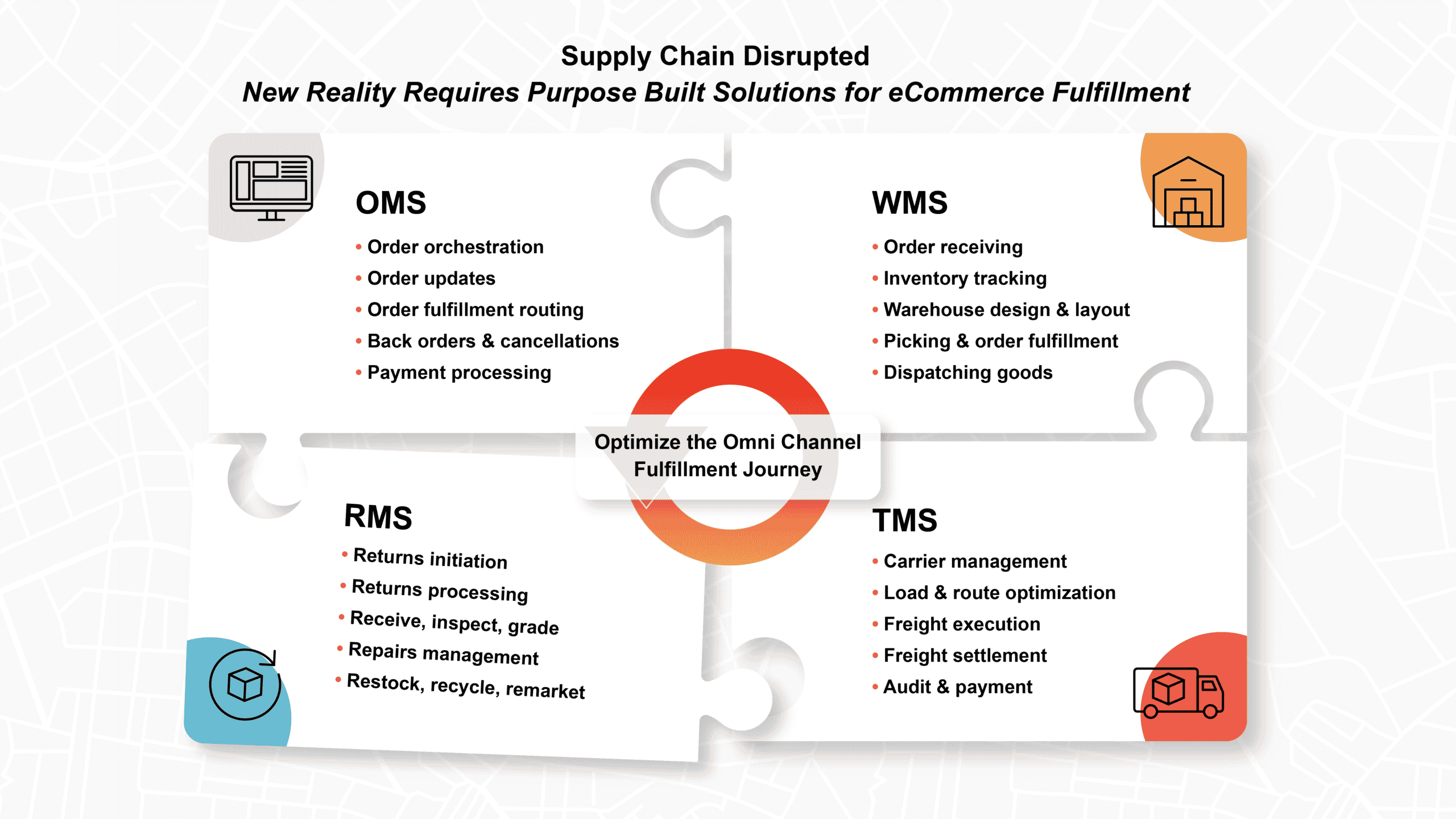Behaviors and expectations around eCommerce purchasing have evolved in recent years, with some aspects shifting more drastically than others. In both B2C and B2B eCommerce environments, reverse logistics are playing a greater role as product returns increase. Customer service, profits, cost and efficiency are all dependent on an organization’s ability to manage eCommerce returns.
Read on to understand the key trends in eCommerce returns, reducing eCommerce returns, and what you should expect in the near future.
More purchases = more item returns
Retail B2C eCommerce sales have risen by double-digit percentages in recent years. But that’s not all great news for bottom lines: Upwards of 30% of eCommerce sales are returned. And for every $1 billion in sales, the average retailer incurs $106 million in merchandise returns.
From the cost of the returned postage, to reverse transportation, to holding costs, disposal, picking and more – retailers are getting hit with costs every step of the way. In a recent ReverseLogix survey, 80% of eCommerce retailers said the cost of managing product returns is “significant to severe.”
Handling product returns with a purpose-built returns management system (RMS) is essential for mitigating the continued cost acceleration. Keep costs under control and ensure consistent practices across your locations with better automation, clearer visibility into returns processes and metrics, and customer-centric tools.
B2B faces unique eCommerce challenges
B2B buyers now expect the same level of speed, ease, and autonomy when making a business return as they do when returning a personal item. The challenge is that B2B eCommerce enterprises have unique complexities when it comes to returns management…
- They’re managing different returns and claim types from partners
- Rules and policies for partners must be consistent
- There may be considerations for warranties and repairs
As this DHL report notes…
The increasing rate of returns represents a financial and logistical concern for businesses who could see huge – and valuable – volumes of inventory flowing out and then back in again.
There is an opportunity, however, for retailers to gain a competitive advantage through a smooth returns process. If someone’s experience is positive, it’s likely that they will buy from that retailer again. Conversely, a bad returns experience lowers the chance of a repeat purchase.
Returns management is a huge opportunity area for B2B organizations that sell anything online. An RMS built for the B2B world allows customers and partners to return products in a standardized, uniform way based on how you do business. With more visibility and tracking into your processes, you can avoid over-crediting and vendor policy abuse.
A leading global appliance company replaced a spreadsheet-heavy returns process with an RMS that standardized returns initiation for distributors. Very quickly, the company learned that some returned items were counterfeit products. By implementing a standard and very detailed returns process, the company caught the fake returns, identified customers who abused the policy, and saved significant money.
Increase use of marketplace sites
B2C and B2B eCommerce companies often sell products on third-party marketplace sites. Whether it’s Amazon or Alibaba, Overstock or even Target, consumers are interacting with different brands on a huge range of sites. According to Digital Commerce 360, the top 50 U.S.-based marketplace sites saw sales grow 40% in 2020.
This can be great for business, but a huge headache when managing returns. You need rock-solid return policies and the right tech infrastructure to give customers an easy returns experience, protect against fraud, and recoup value from the returned product.
Managing workforce constraints
The best workflows and policies and rules aren’t helpful if you don’t have the workforce to carry them out. Labor shortages and an unstable labor market don’t appear to be lessening anytime soon, but the solution is more than simply finding people.
An RMS will have an immediate impact on soothing the stress of too few workers. With end-to-end visibility into the returns process, you can see where teams may be lagging behind or exceeding expectations. Highly configurable workflows within the RMS helps employees work faster and with fewer errors. Add rules for stock rotations, schedule SR initiations and rotate locations to keep everyone working in concert and for maximum efficiency.
It’s time to optimize returns management
B2C and B2B enterprises have spent a lot of resources optimizing order management, warehousing and transportation. Now’s the time to look beyond what’s sent out of your company and towards what comes back. It’s time to fully grasp the true costs incurred from product returns.
Discover why ReverseLogix eCommerce returns management solution can help you navigate current trends.
The beauty of an RMS is that it can slide right into your tech stack. No rip and replace. No months and months of implementation and training. It’s an intuitive system with instant ROI that complements and fuels the success of your supply chain systems.


